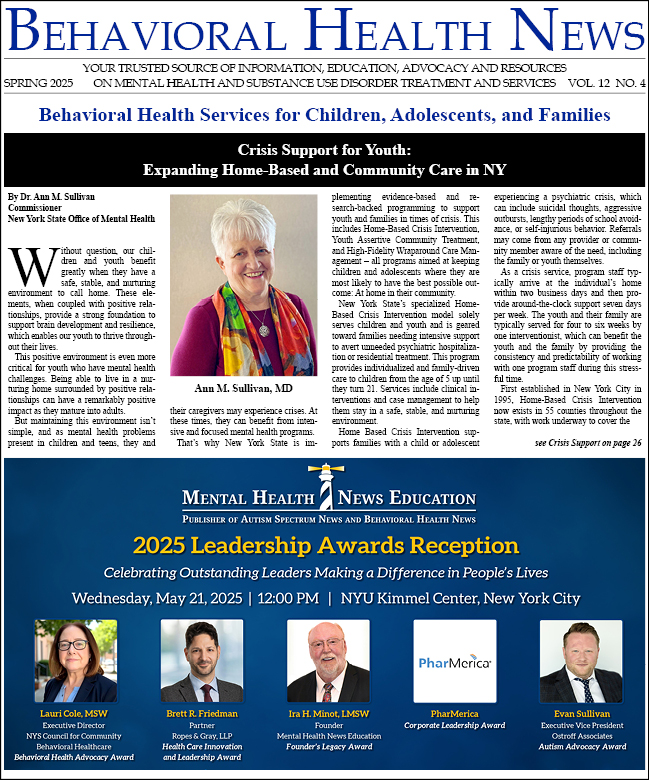-
Rewriting Recovery: A Mind-Body Model for OCD and Depression
Abstract Background: Obsessive-Compulsive Disorder (OCD) affects over 3 million adults in the U.S. and is frequently accompanied by depression, anxiety, gastrointestinal issues, and sleep disturbances. Standard treatments, particularly selective serotonin reuptake inhibitors (SSRIs), often fall...
-
Methadone Offers Hope, Not Harm
For more than a decade, I’ve been caring for patients who struggle with opioid addiction and have seen firsthand the devastating toll it takes on their lives. For many, medications for addiction treatment, including methadone, have given them their lives back. Yet, I see time and again the...
-
Addressing Child and Youth Loneliness: Family-Based Interventions to Improve Mental Health
*This is a composite case example. The names have been changed to protect the identities of the clients. Loneliness is not simply a feeling but a social determinant of one’s overall health. Loneliness is a state of emotional distress that develops when one experiences a disconnect between...
-
The Impact of Leisure Activities on Mental Well-Being in Children and Adolescents with Prader-Willi Syndrome and Trauma
Prader-Willi Syndrome (PWS) is a rare, complex genetic syndrome estimated to impact one in 10,000 to 30,000 individuals worldwide (National Library of Medicine [NLM], 2020). PWS is generated by a genetic mutation on Chromosome 15, causing a wide range of cognitive and physical disabilities (NLM,...
-
Enhancing Equity in Adolescent Mental Health: Expanding Access to Comprehensive Dialectical Behavior Therapy (DBT) Treatment
Over the last decade, the US has experienced a significant increase in mental health symptomology and suicidality among children and adolescents, with the COVID-19 pandemic contributing to an even greater increase. In 2021, the surgeon general deemed mental health concerns in children and...
-
Supporting Adolescents in Eating Disorder Treatment: The Impact of Family Involvement
For mental health professionals and those invested in behavioral health, understanding the role of family in eating disorder treatment is essential. All eating disorder treatment patients benefit from, and most often require, a personalized and multi-faceted approach to care where clinical...
-
NYSPA Report: Measurement-Based Care – One Piece of the Puzzle in Ensuring Quality Care and Addressing the Crisis in Children’s Mental Health
We are all painfully aware of the children’s mental health crisis (Office of the Surgeon General, 2021). It has affected our children, adolescents, young adults, and their family members. It also impacts those of us who interact with children through our work: the mental health professionals, of...
-
How Employer-Provider Partnerships Can Transform Treatment-Resistant Mental Health Care
After three decades treating complex psychiatric conditions across diverse clinical settings, I’ve observed how inadequately addressed mental health disorders can devastate lives. And what has become increasingly clear through my work with patients suffering from chronic and even...
-
Dutchess County’s Stabilization Center Among New York’s First Licensed Supportive Crisis Stabilization Centers
Dutchess County’s first-of-its-kind Stabilization Center, a partnership between the Dutchess County Department of Mental Health (DCDMH) and People USA, recently became one of the first Supportive Crisis Stabilization Centers licensed by the New York State Office of Mental Health (NYS OMH) and the...
-
Saving Lives At Work: How Employers Can Lead in Suicide Postvention As Prevention
It’s OK to talk about suicide. The more we do so, the more we break down barriers that stop people from feeling safe enough to seek help. Vital strides have been made to open the dialogue on suicide. For example, the World Health Organization (WHO) Suicide Prevention Day theme for 2024-2026 is...







